World War II. 1941-1945. Chetnik movement in Yugoslavia
The oath of three young Chetniks from Medvedzha, 1941
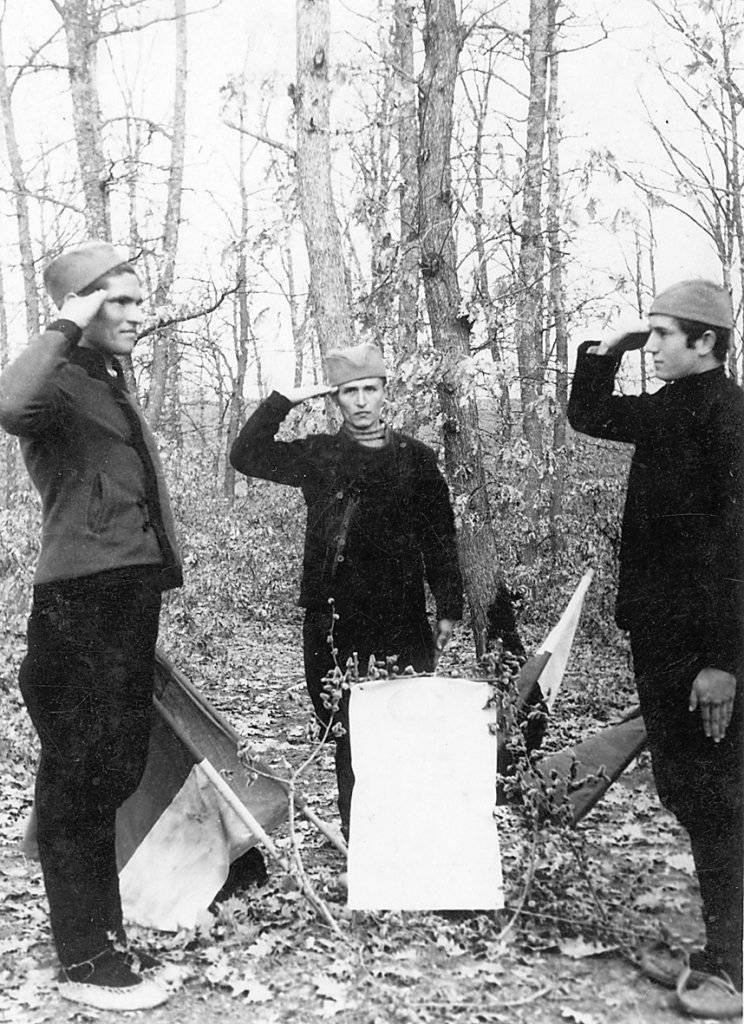
After the initial clash with the occupying forces of the axis, the Chetniks were divided, some of them began to fight against the Germans and the Ustashe, while others concentrated on fighting the communist partisans, sometimes the Chetniks collaborated with the Italians, and sometimes even with German troops.
A group of Chetniks are listening to a British radio station near Medvej in Vulinov on 1942. year
Dragoljub (dragees) Mihajlovic (Serbia Dragoљub "Drazen" Mihailoviћ.), Is also possible to write the names of M. (27 April 1893, Ivanjica - 17 July 1946, Belgrade) - Yugoslav Serb military leader, a member of the Balkan wars and the First World War, the commander of the Chetnik movement During the Second World War.
General, leader of the Chetnik movement Dragoljub (Drazha) Mikhailovich in the Serbian village of Pranyana with representatives of the American military mission.1944
After the Axis attack on Yugoslavia 6 on April 1941, Colonel Mikhailovich was sent to the Sarajevo area by the head of the operational department of the 2 Army. Even in peacetime, Dragoljub proposed that the high command, in the event of war, withdraw the army from the borders to the mountains in order to proceed to guerrilla actions so that the German army could not take advantage of its technical advantage. But in the Yugoslav leadership they decided not to give a single inch of their land to the enemy without a fight, and Mikhailovich’s proposal was rejected. Under the blows of the German, Italian and Hungarian troops at the front and the Croatian armed forces in the rear, the Yugoslav army retreated and was completely defeated in a few days. 17 April military command signed a surrender.
The oath of the soldiers of the Second Ravnogorsk corps of the Chetniks Xnumx
During the surrender detachment Mikhailovich was in Bosnia. Upon learning of the government’s surrender, Dragolyub called on soldiers and officers to refuse to accept it. After that, the detachment headed for Serbia. 8 May they arrived at Ravna Gora. This day is considered the beginning of the movement of the Chetniks, or the Ravnogorsk movement.
Fighters of the Second Ravnogorsk Corps of the Chetniks in oath.1942
After some time, the officers and soldiers of the defeated Yugoslav army and those who did not want to put up with the occupation of their homeland reached out to Equal Gora. Most of those who came to Mikhailovich sent to their homelands to organize partisan movements throughout the country. He believed that the forces were not equal, and it was premature to enter into open confrontation with the enemy. According to the doctrine of Mikhailovich, it was necessary to carry out actions of sabotage and sabotage, conduct reconnaissance and subversive activities, protect the civilian population and prepare the people for a general uprising, when suitable conditions are created for this.
A detachment of the Chetniks from the Deligrad Corps in the city of Sokobanya. Serbia, winter 1942-43gg.
In the summer of 1941, communists began to be active in Yugoslavia. The leader of the Communist Party of Yugoslavia, Josip Broz Tito, created armed units, later transformed into the People’s Liberation Army of Yugoslavia. In August, 1941, Army General Milan Nedich, formed the Government of National Salvation, which set the course for cooperation with the Germans. At first, the Chetniks and Communist partisans tried to cooperate in the fight against the invaders. However, in November, clashes began, which soon grew into a civil war. The Chetniks fought against the Communists, against the occupiers, and against the Ustashes, but they tried to cooperate with the Nedich troops.
Chetniki on the transition in the winter 1942 — 1943's. Neighborhoods of Aleksinac in southern Serbia
The Chetniks achieved great success and in 1942, they controlled large areas, clearing them both from invaders and from communists. The Yugoslav government in exile established contact with Mikhailovich and recognized him as commander of the Yugoslav army, in December conferred on him the rank of brigadier general, in January 1942 divisional general, and in July 1942 - army general. The German command launched several major operations to destroy the ravnogory movement and its leadership. But these operations failed. In July, the 1943, the occupiers appointed for the head of Mikhailovich 100 thousand gold marks. In February, 1943, the leader of the French Resistance Movement, General Charles de Gaulle awarded Mikhailovich with a Military Cross.
Chetniki machine gunners from the Deligrad Corps. Aleksinac district in southern Serbia. Winter 1942-1943's
The Yugoslav communists, seeing Mikhailovich as a serious opponent, tried to deprive him of the help of his allies in the Anti-Hitler coalition, accusing him of collaborating with the occupiers. In 1944, the allies, including the Yugoslav emigrant government, finally shifted to Tito.
The soldiers are armed with German machine guns MG-34. The surroundings of the city of Kralev, Yugoslavia. 1943 year.
However, Mikhailovich did not give up and, in connection with the defeats of the Germans at the front, 1 September 1944 announced a general mobilization, trying to prevent the communists from seizing power. In October, the Red Army entered the territory of Yugoslavia, and almost the whole country was under the control of the Communists. Most of the Chetniks departed to the north of the country, where they, together with parts of the Slovenian home-keeping and the remnants of the Serb SS Volunteer Corps, tried to resist NOAJ in Slovenia. But the forces were unequal, and most of the Chetniks retreated to Italy and Austria. Mikhailovich himself refused to leave the country and urged the Chetniks not to fold weapons and continue the fight. In March, the 1946 detachment of Mikhailovich was crushed, and he himself was captured.
A group of Chetniks from the Deligrad Corps on vacation in the village. Picture taken in the vicinity of the town of Aleksinac in southern Serbia. Summer 1943 of the year
His trial ran from 10 June to 15 July 1946. The court refused to accept the testimony of American officers who were under Mikhailovich during the war, as well as the Anglo-American pilots shot down over Yugoslav territory and saved by the Chetnik (more than 500 pilots were rescued during the war).
The commander of the Second Ravnogorsk corps of the Chetniks, Captain Predrag Rakovich, conducts a review of the fighters. 1943
15 July Mikhailovich was sentenced to death and July 17 was shot early in the morning. Presumably, this happened in Belgrade, in the area of the Ada Tsiganlia island beach, near the now-demolished old prison [1] In March 1948, US President Harry Truman awarded the Dragoljub Mikhailovich with the American Legion of Honor medal (posthumously). In 2001, the award was presented to his daughter.
The commander of the Second Ravnogorsk corps of the Chetniks, Captain Predrag Rakovich, conducts a review of the fighters. District of Cacak, Yugoslavia, 1943 year.
His burial place remains unknown. In June 2011, the Secretary of the State Commission for the Detection of Secret Burials killed after 1944, Srdjan Cvetkovic published the fact [1] that, during prospecting at the site of shootings and subsequent burials in Belgrade, in the area of the Ada Tsiganliya island beach, near the now demolished the old prison, employees of the State Commission successfully found the remains of bodies and handcuffs, including the remains of Drazhe Mikhailovich.
A detachment of Chetniks from the Deligrad Corps is part of a Serbian village. Picture taken in the vicinity of the town of Aleksinac in southern Serbia, March 1943
Lieutenant Boyan Ristanovich, intelligence and counterintelligence officer, head of the military police and chairman of the military court of the Second Ravnogorsk Chetnik Corps. 1943 year.
The head of the Ravnogorsk Pokoda (Chetniks) General Drazha Mikhailovich. Serbia, January-February 1943.
Nurse of the Second Ravnogorsk Corps of the Chetniks Kosan Hatchi Nikolic 1943
A small detachment of Chetniks in the vicinity of the town of Deligrad in southern Serbia. Squad Leader - Captain Vlastimir Vesich (standing seventh from left)
A squad of Chetniks from the 4 Sokobansky brigade in the vicinity of the city of Sokobanja in the south of Serbia. Winter 1943 — 1944's.
The commander of the Second Ravnogorsk Corps of the Chetniks, Captain Predrag Rakovich, with the head of the Allied Mission, English General Charles Armstrong. District of mountains. Xnumx
The commander of the Second Ravnogorsk corps of the Chetniks, Captain Predrag Rakovich, speaks at the Vidovdan festival. Neighborhood of the village Lazats, Yugoslavia. 28 June 1944
Soldiers of the Second Ravnogorsk corps of the Chetniks at the festival Vidovdan, on the mountain Elitsa. Neighborhood of the village of Lazats, Yugoslavia, 28 Jun 1944
Standard-bearers of the Second Ravnogorsk corps of the Chetniks at the festival Vidovdan
The commander of the Second Ravnogorsk corps of the Chetniks, Captain Predrag Rakovich, speaks in a solemn oath.
The Chetniks enter Kruševac, October 14 1944. of the year
Colonel Dragutin Keserovich, Soviet Colonel Pronin and American Lieutenant Elsford Kramer spoke on the balcony of the Paris Hotel.
Citizens gathered in front of the monument to the heroes of Kosovo in the city center
Before the monument there was a celebration of the Chetniks
Here we see a demonstration of Chetniks and citizens under the American and Soviet flags.
Zhivadin Andreich. He was captured by the Communists and executed in Krusevac in 1944. To his left his wife, Divna. Another Chetnik is Radomir Zdravich, also shot by the Communists in Krusevac. They belonged to the first Trstenichkoy brigade.
The Chetniks from the first Trstenik brigade, from left to right, Zhivadin Adreiich, Draghi Draskovic, Obrad Milivojevic, Rade Zivkovic and the unknown Chetnik.
Milisav Stoyich. From 1942 to the Trstenick Brigade. Surrendered in 1946 year, was sentenced to death in Nish 15 June 1947. Slobodan Penezic - Krtsun himself shot him and another 12 of the Chetniks.
General Dragolyub Mikhailovich with Muslim leaders in Bielina at the end of September 1944.
Unidentified Chetniks
Two Chetniks kill a Serbian peasant suspected of having links with partisans
Three Chetniks kill a Serbian peasant suspected of having links with partisans.
Soviet soldiers and Serbian peasants stand at the found bodies of Soviet officers killed by the Chetniks. Picture taken at the beginning of October 1944 year in the village of Mikhailovac
Chetnik kills a Serbian peasant, a relative of a partisan
Chetniks kill partisan captured in captivity
The Chetniks kill a partisan who is trapped in their ambush
The Chetniks killed a messenger of partisans who fell into their ambush. November 13 1943 of the year.
Yugoslav partisan, the national hero of Yugoslavia Stepan Filipovich during his execution. Valevo (Yugoslavia), 22 May 1942 of the year
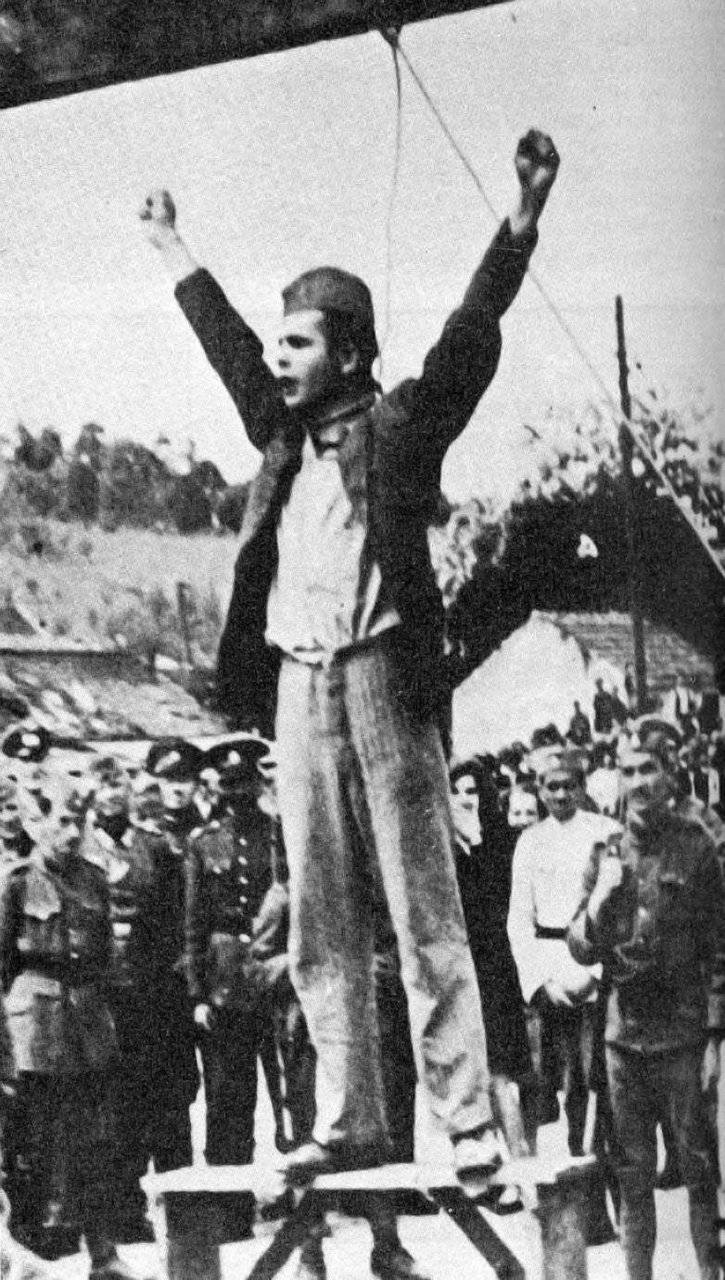
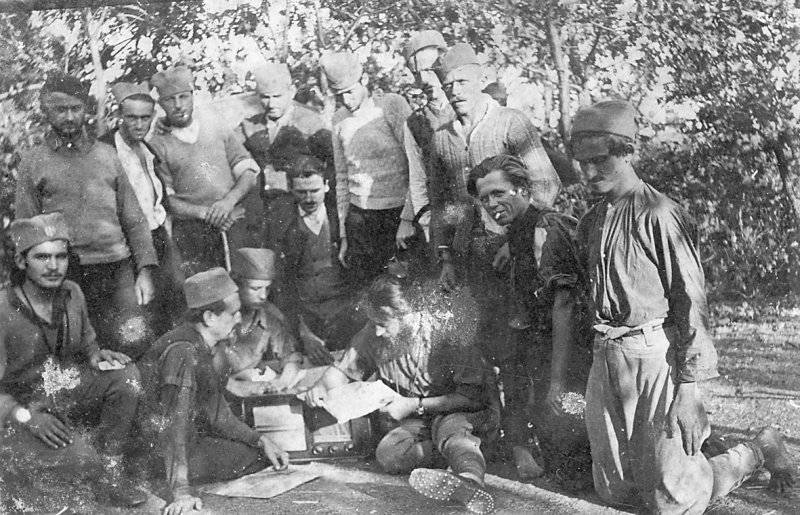
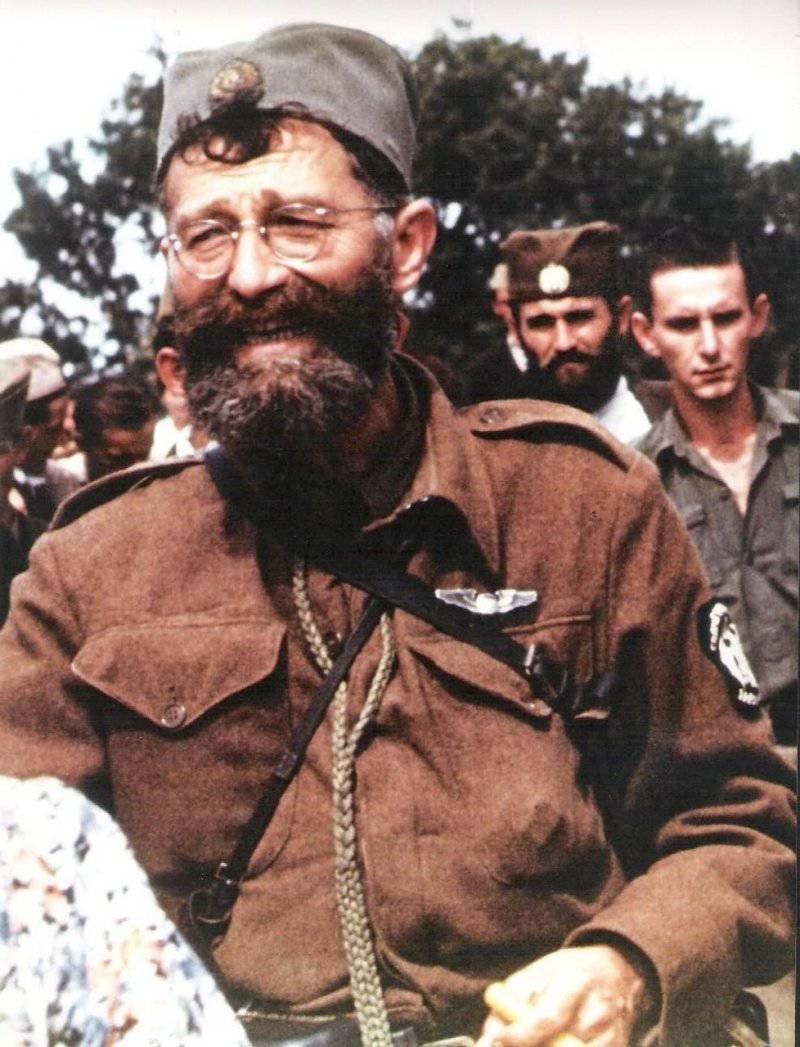
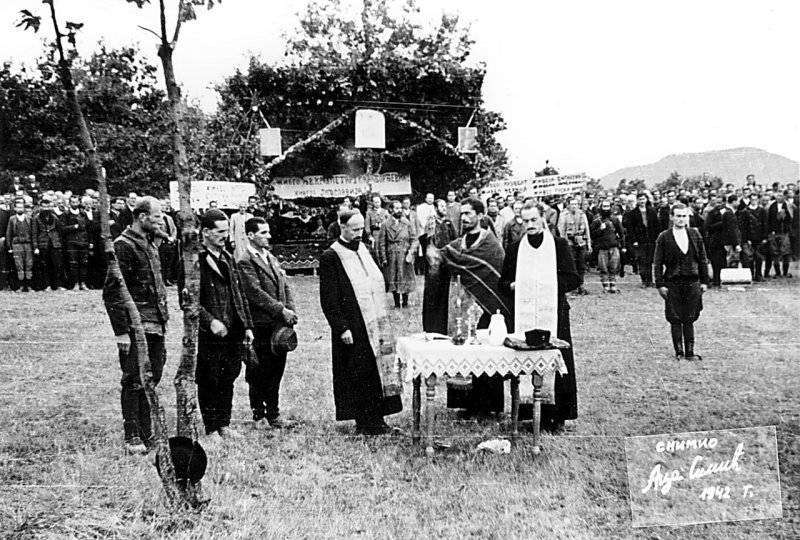
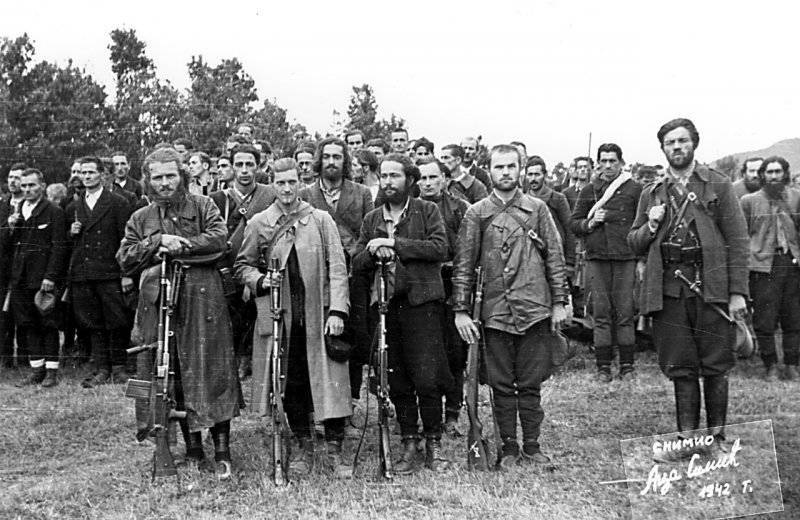
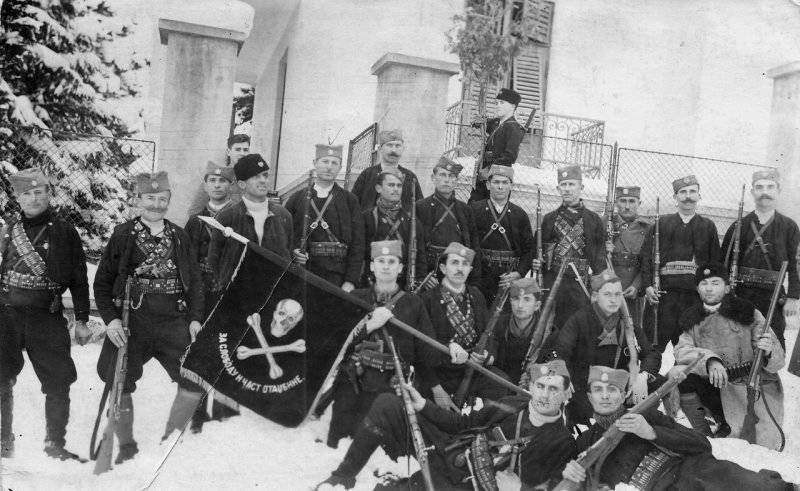
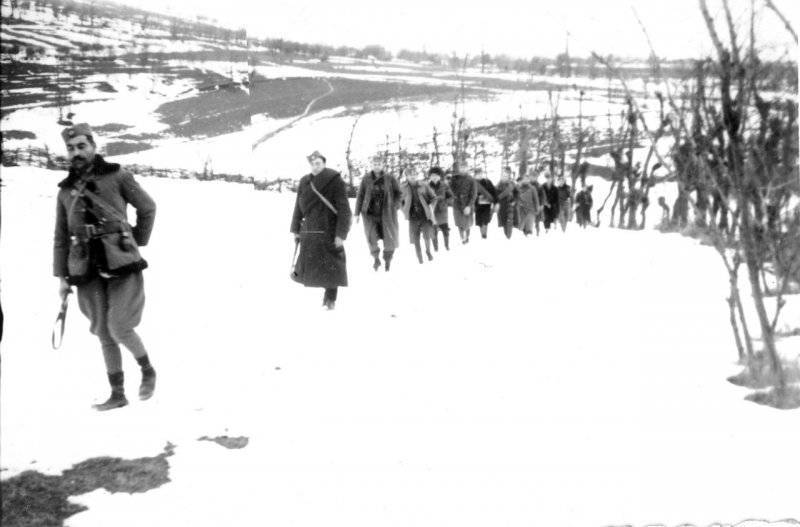
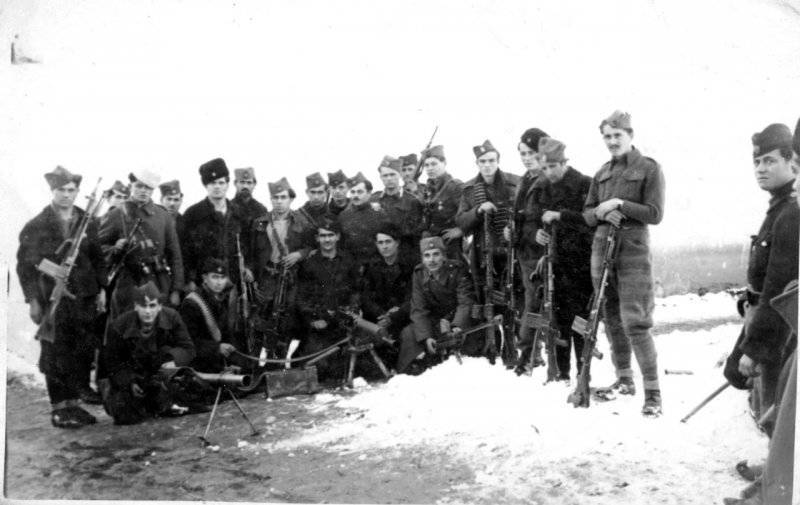
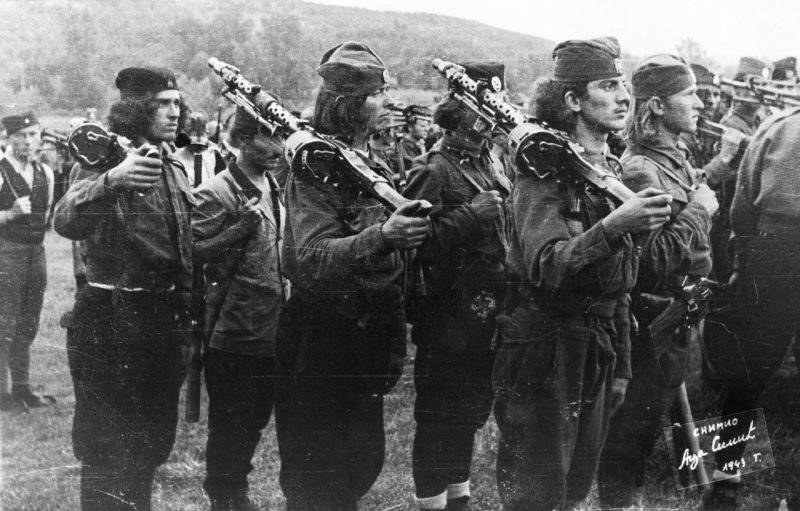
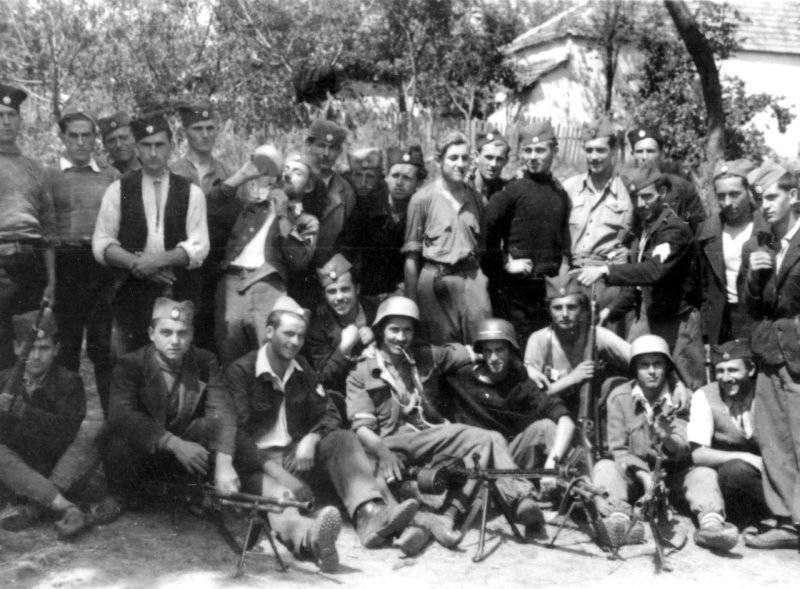
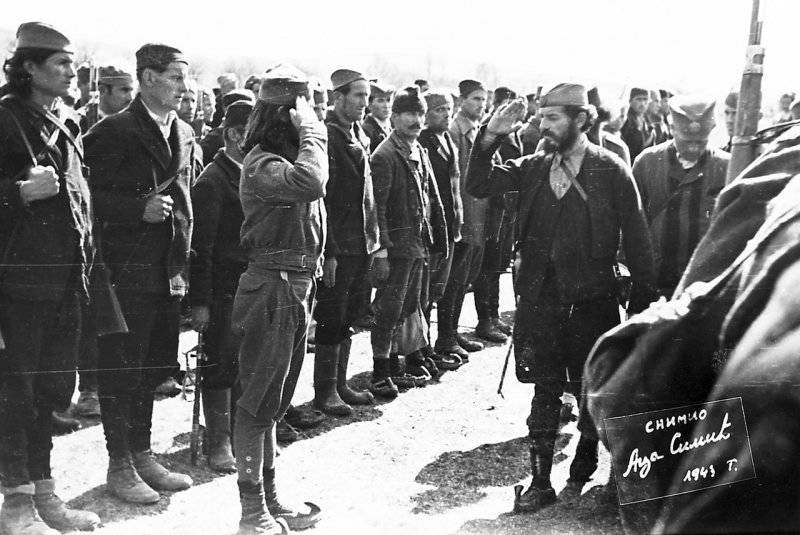
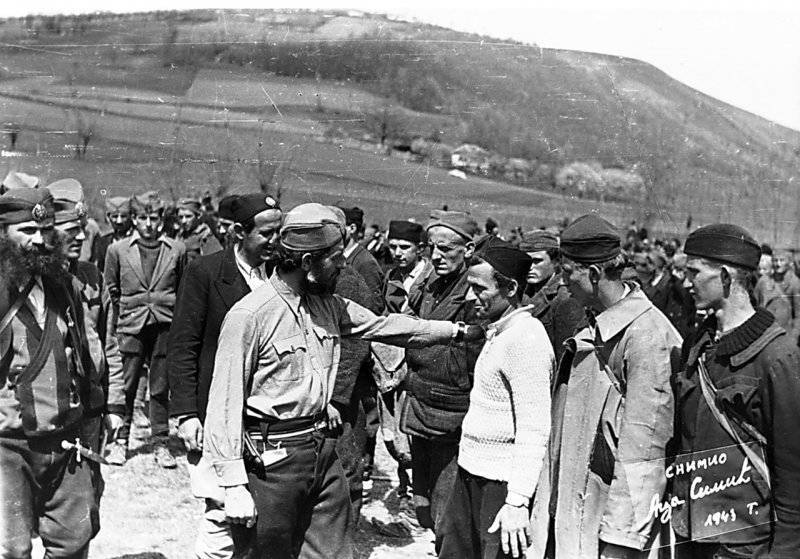
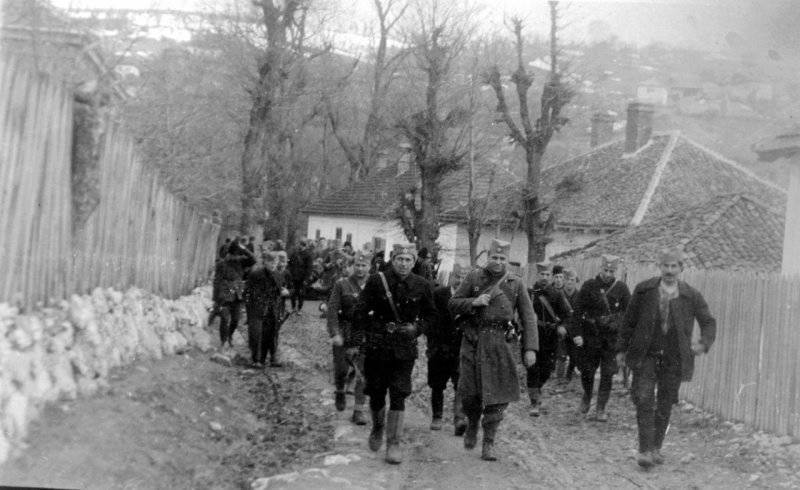
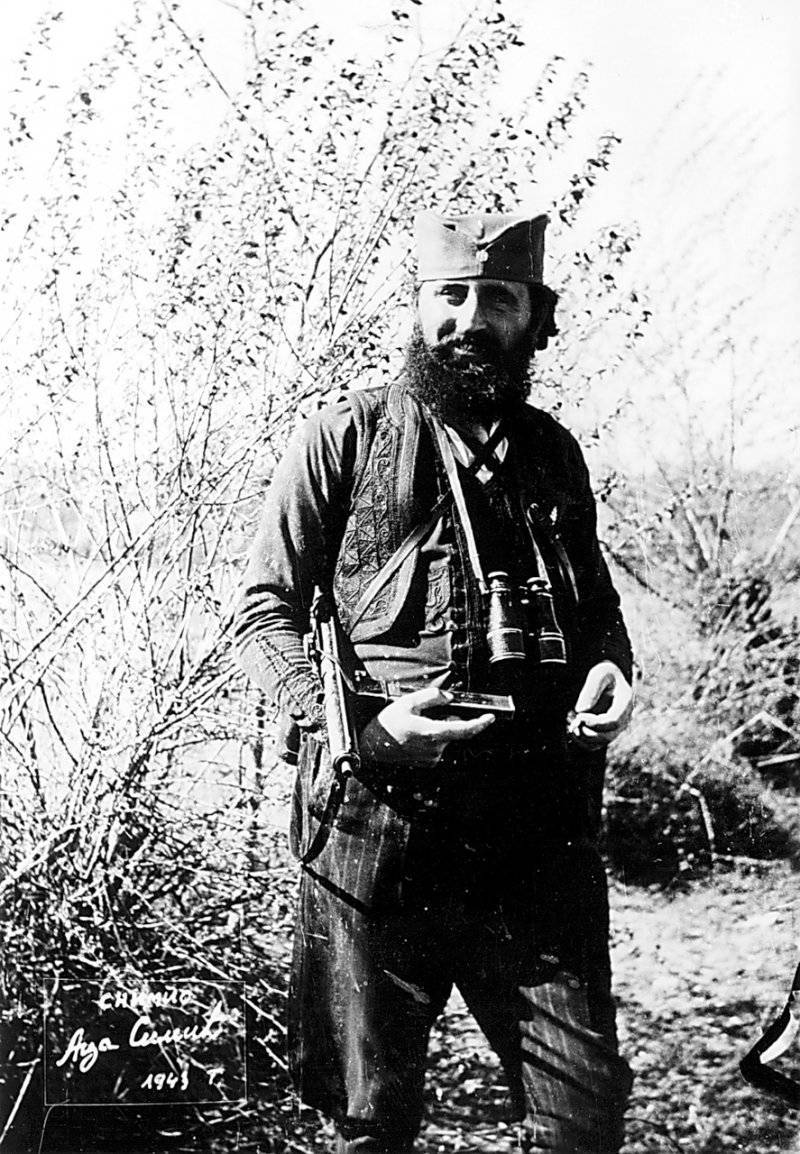
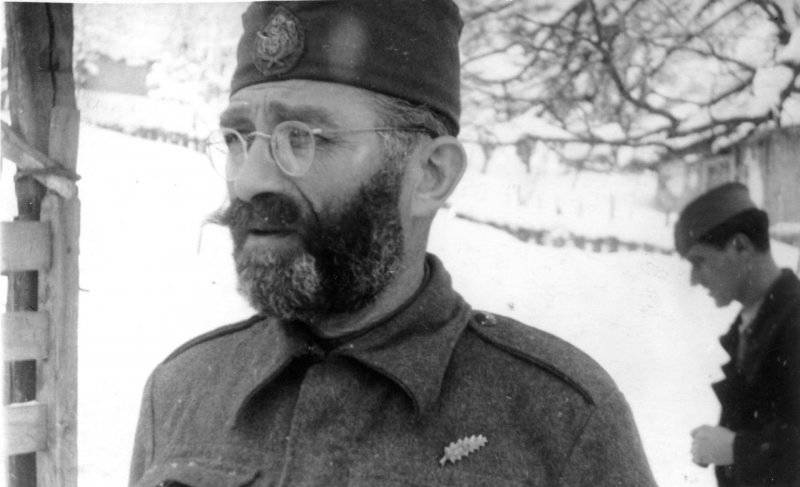
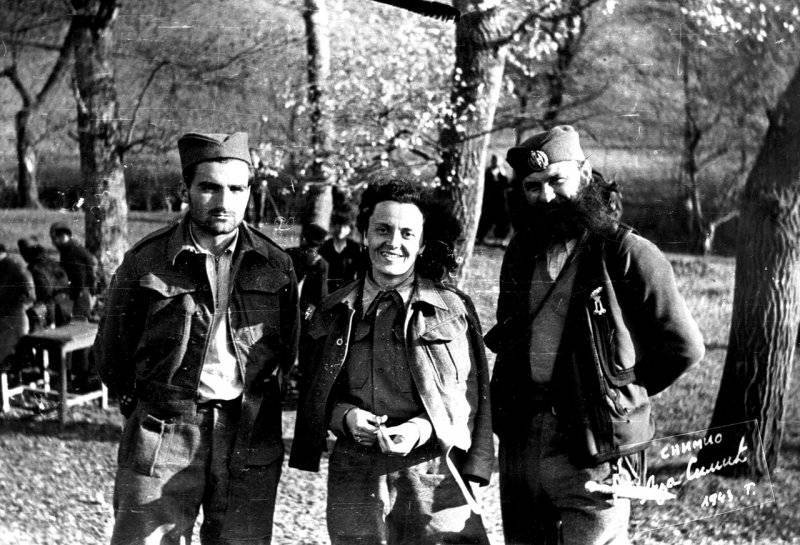
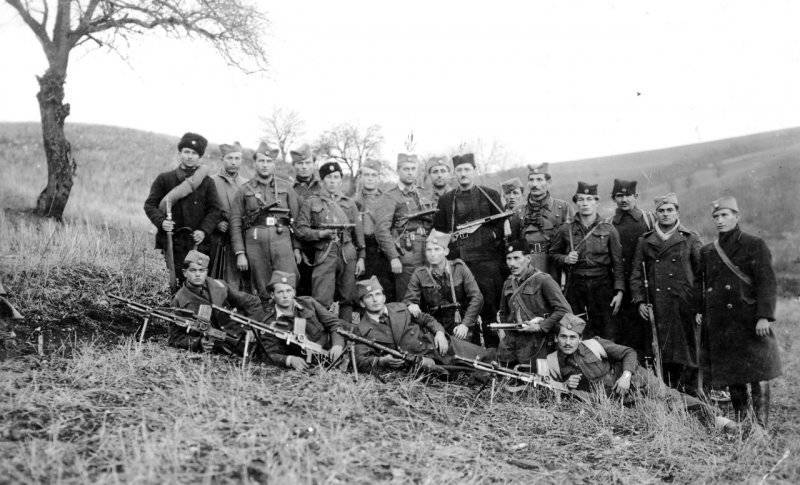
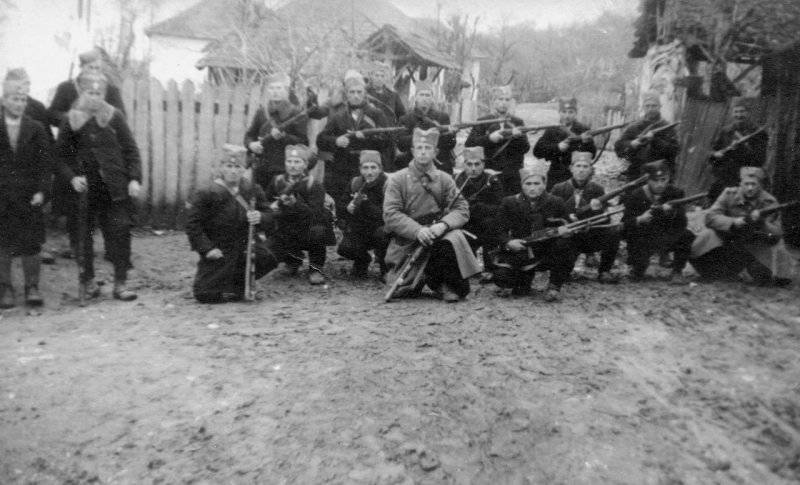
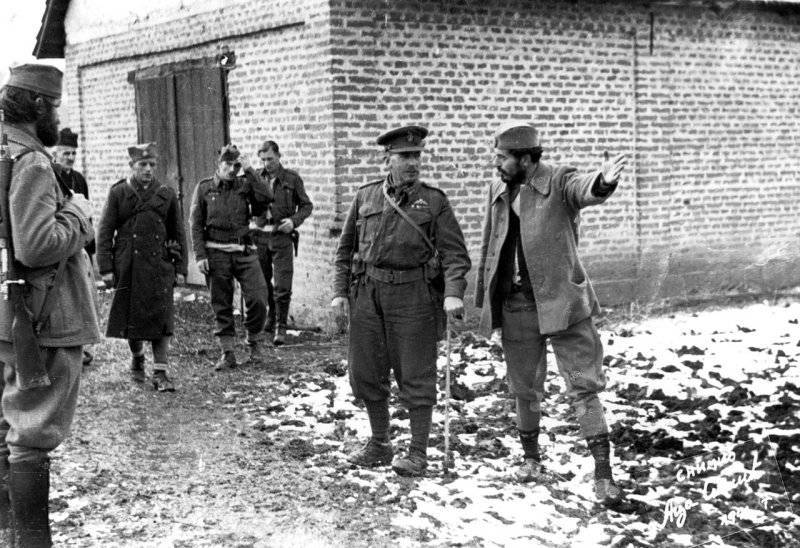
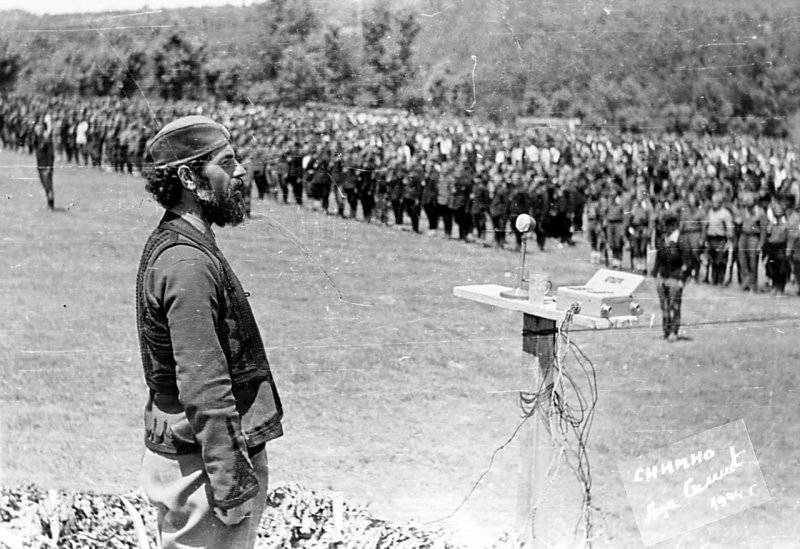
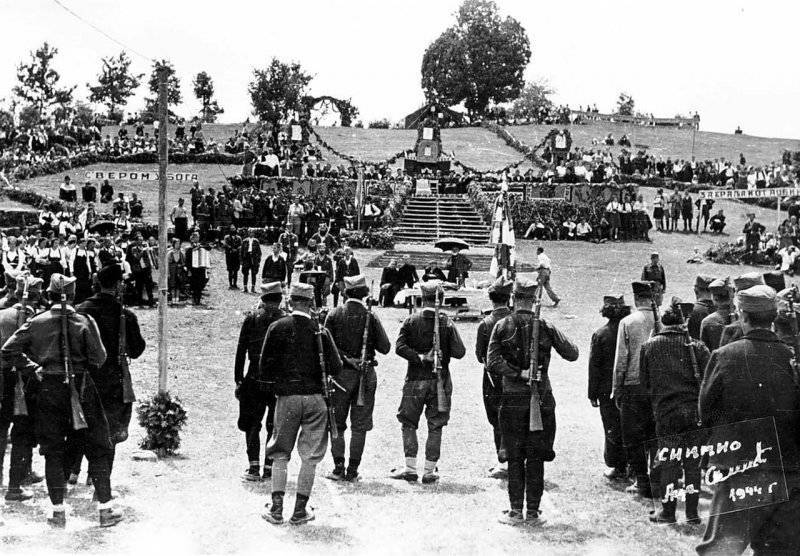
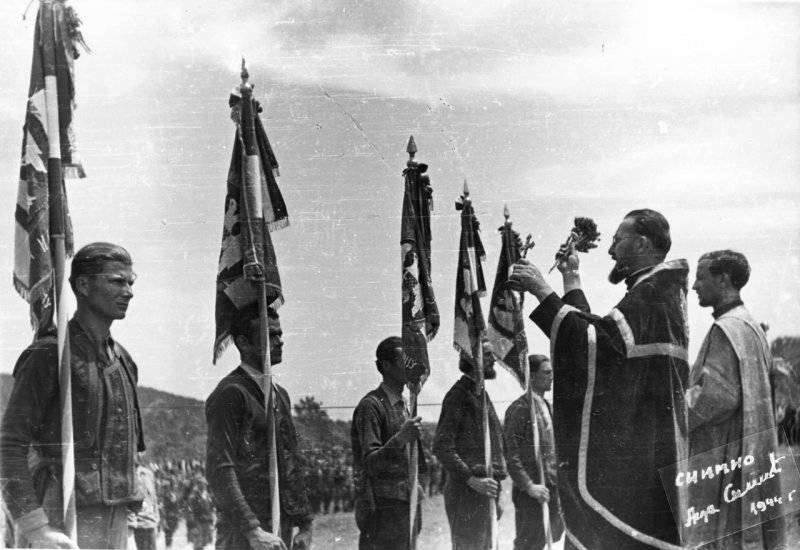
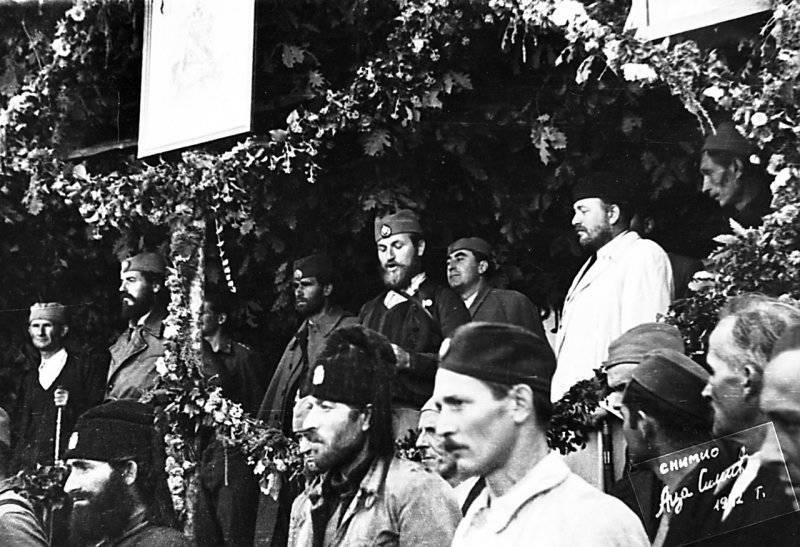
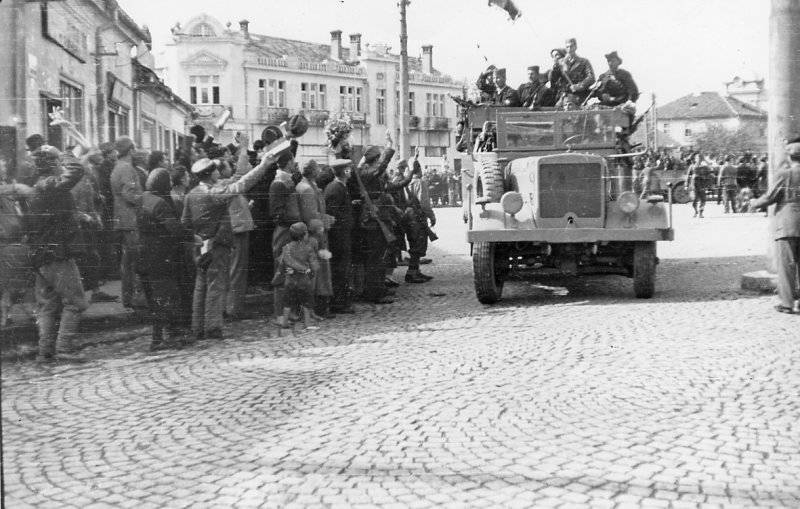
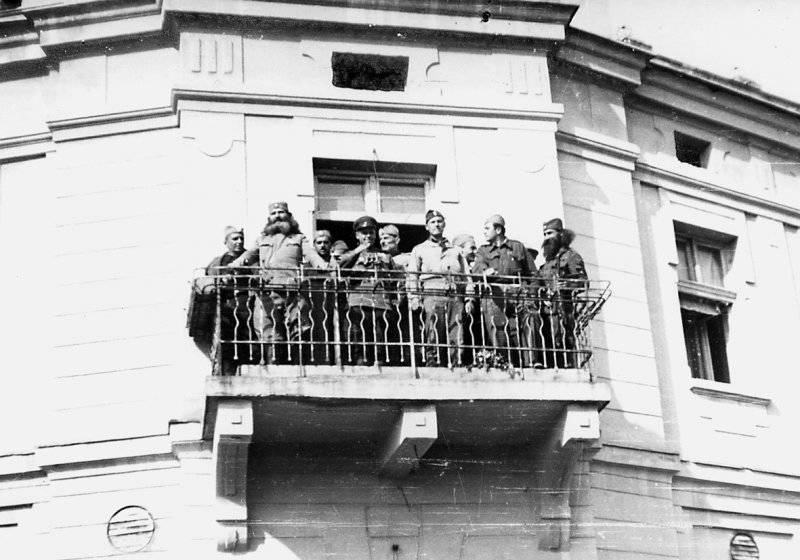
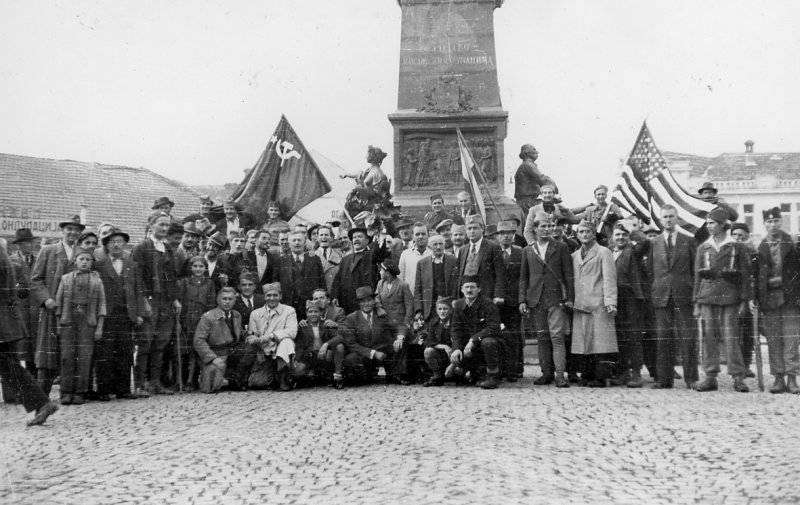
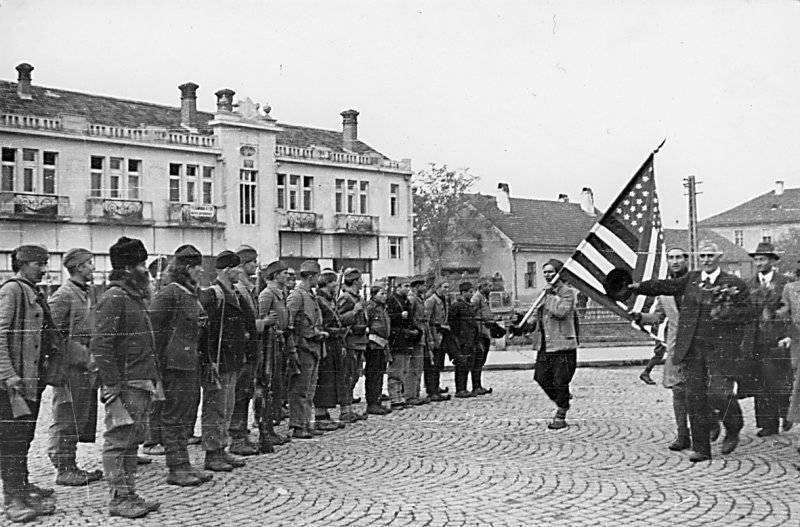
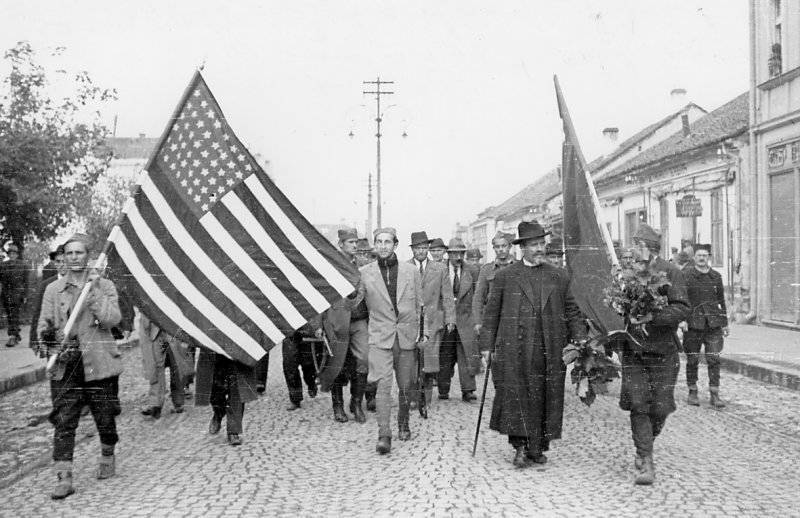
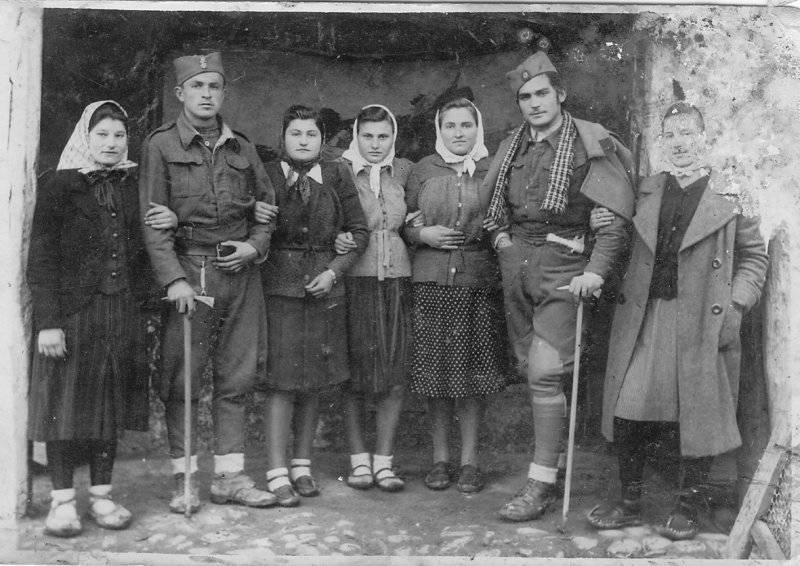
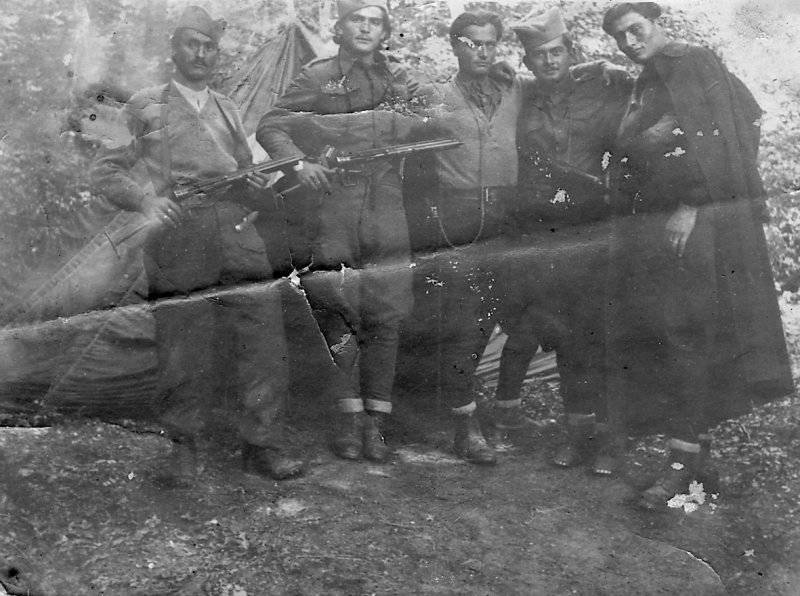
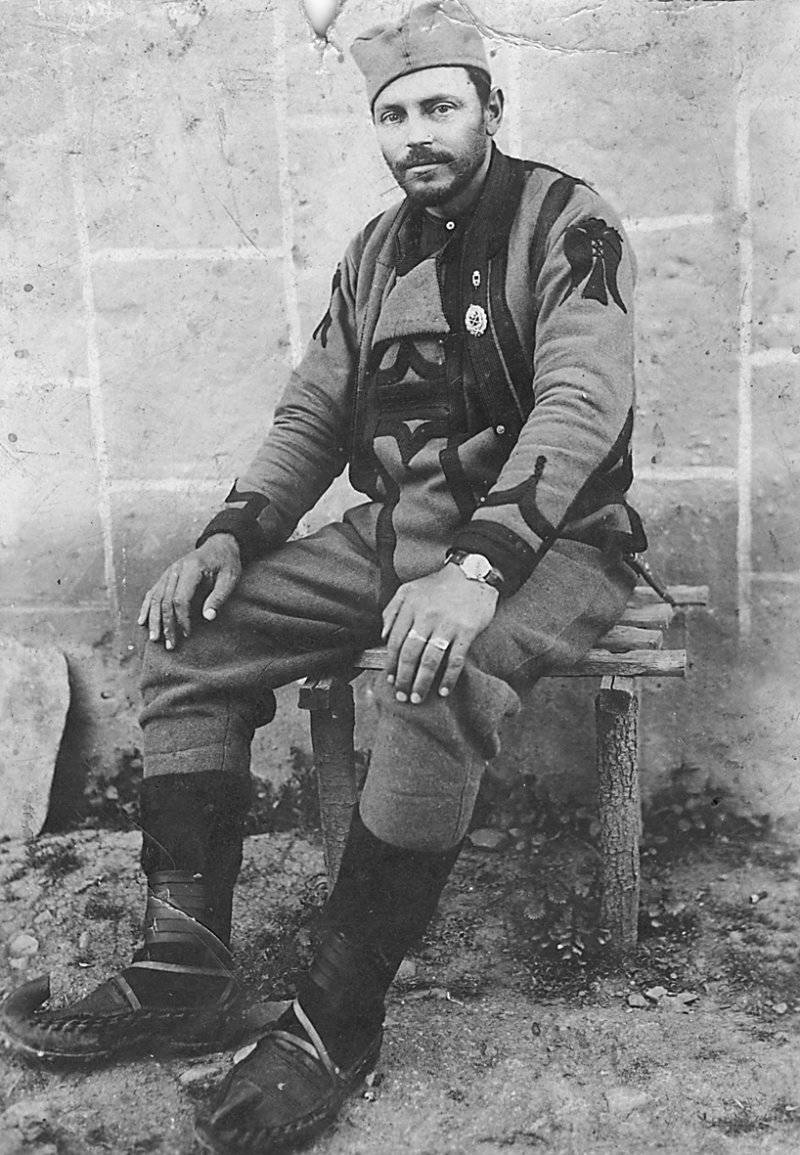
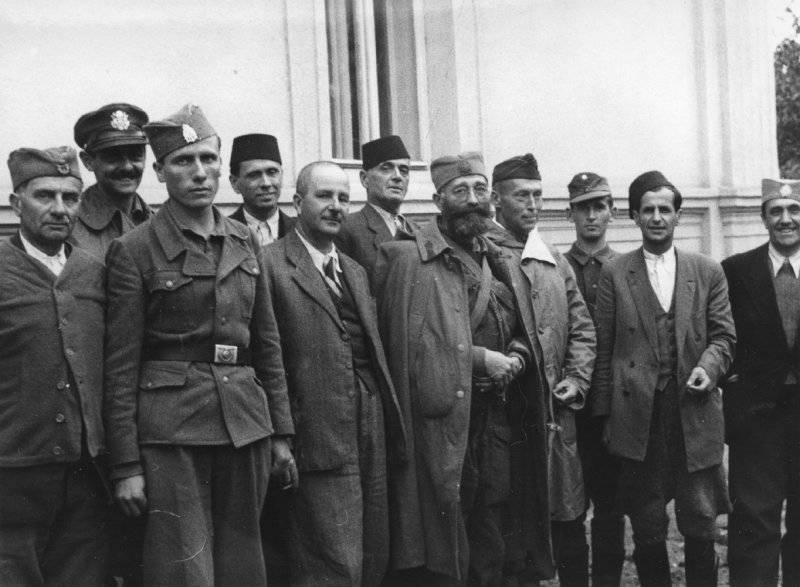
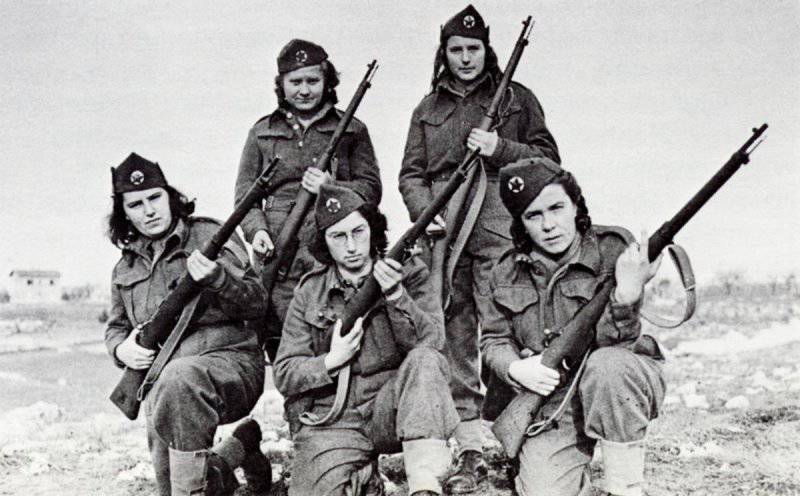
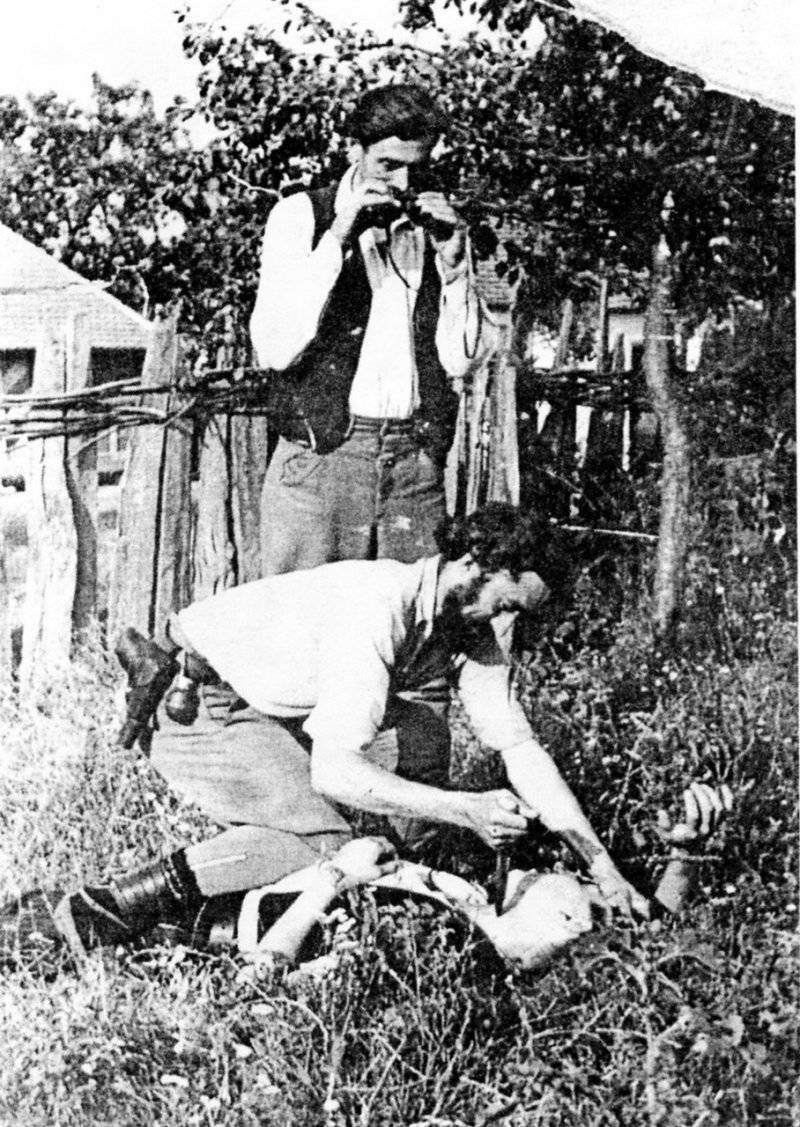
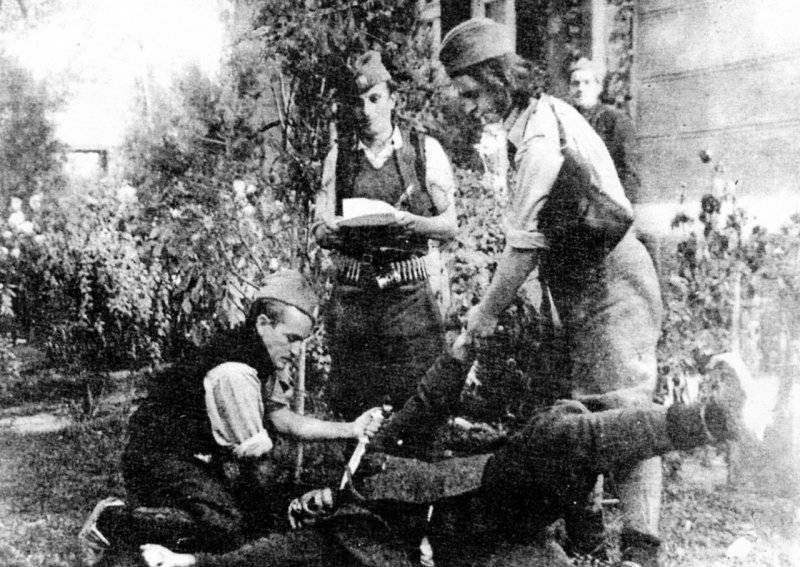
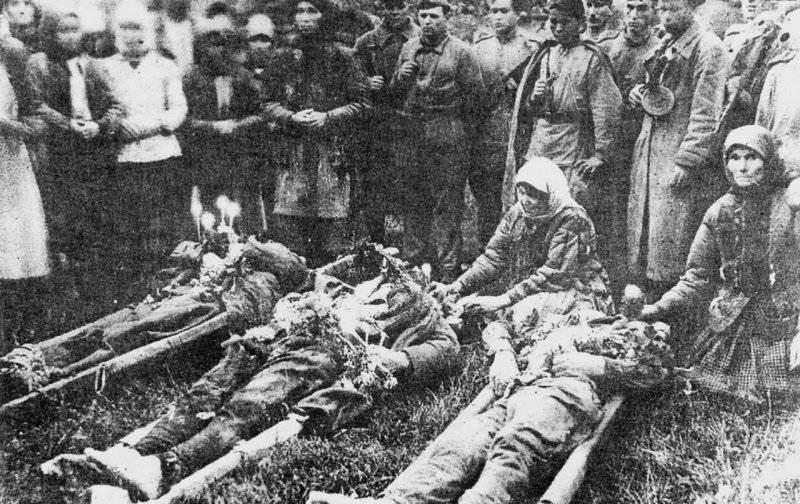
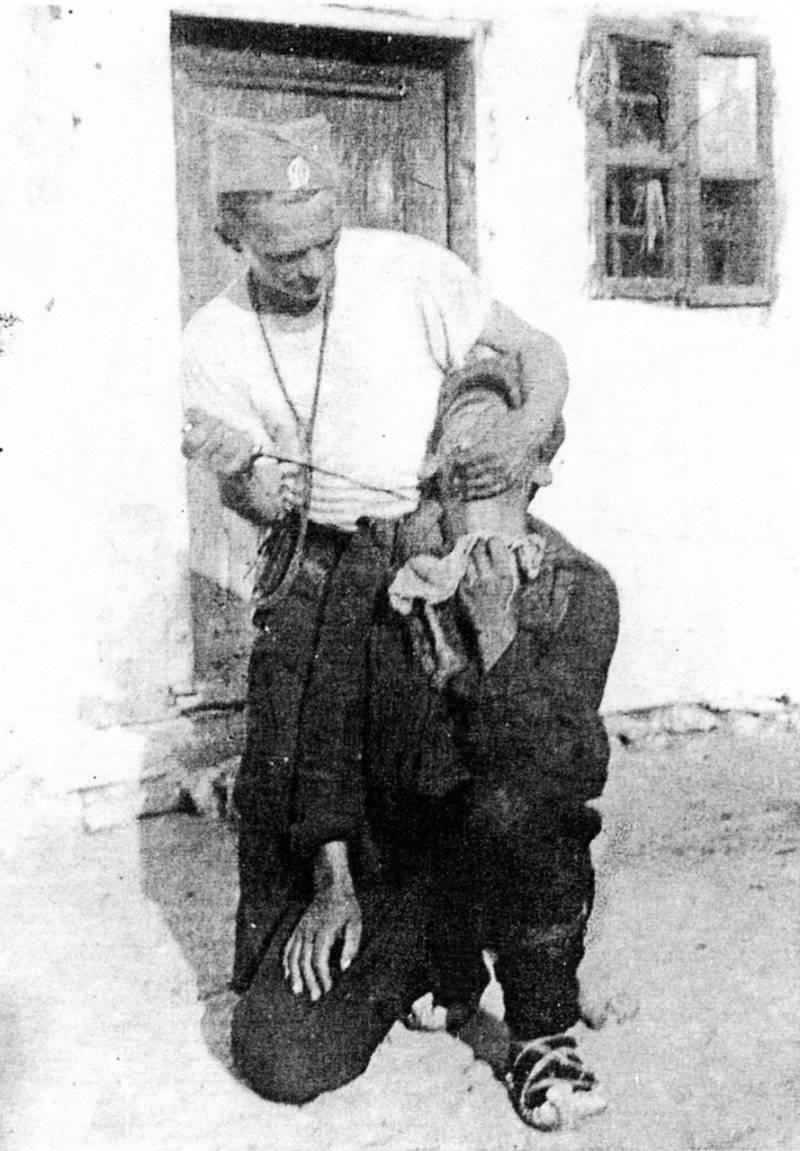
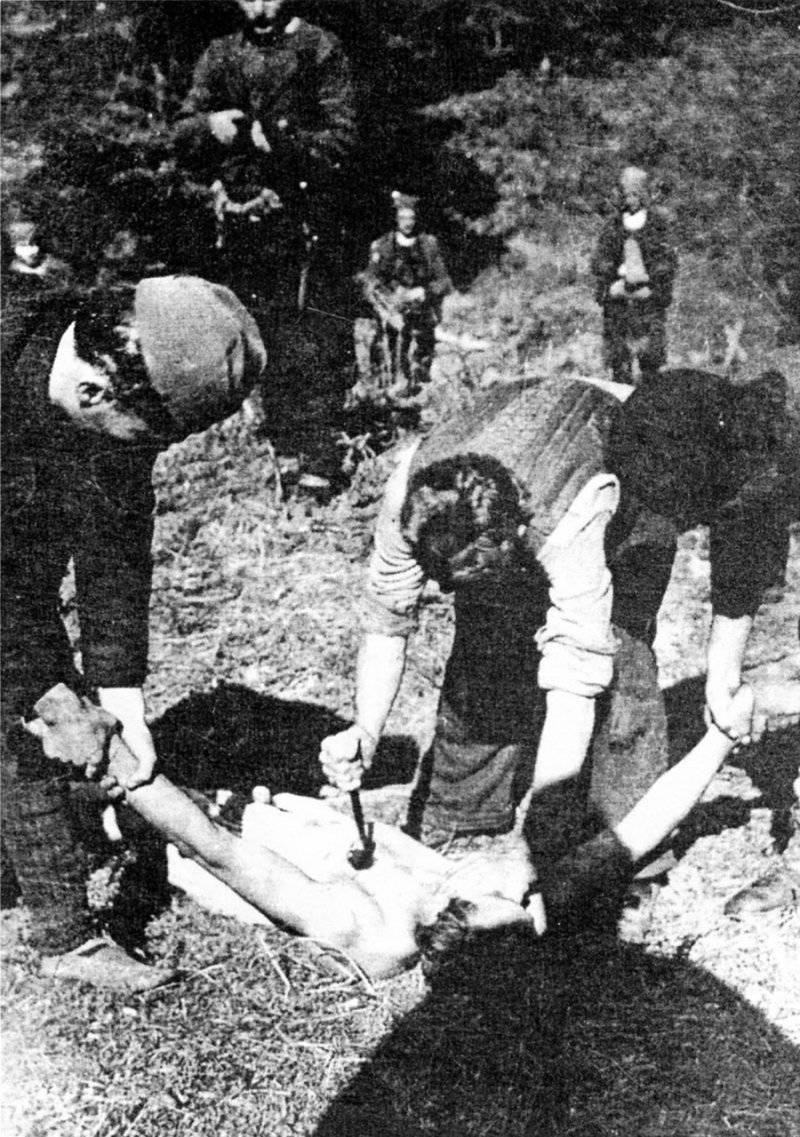
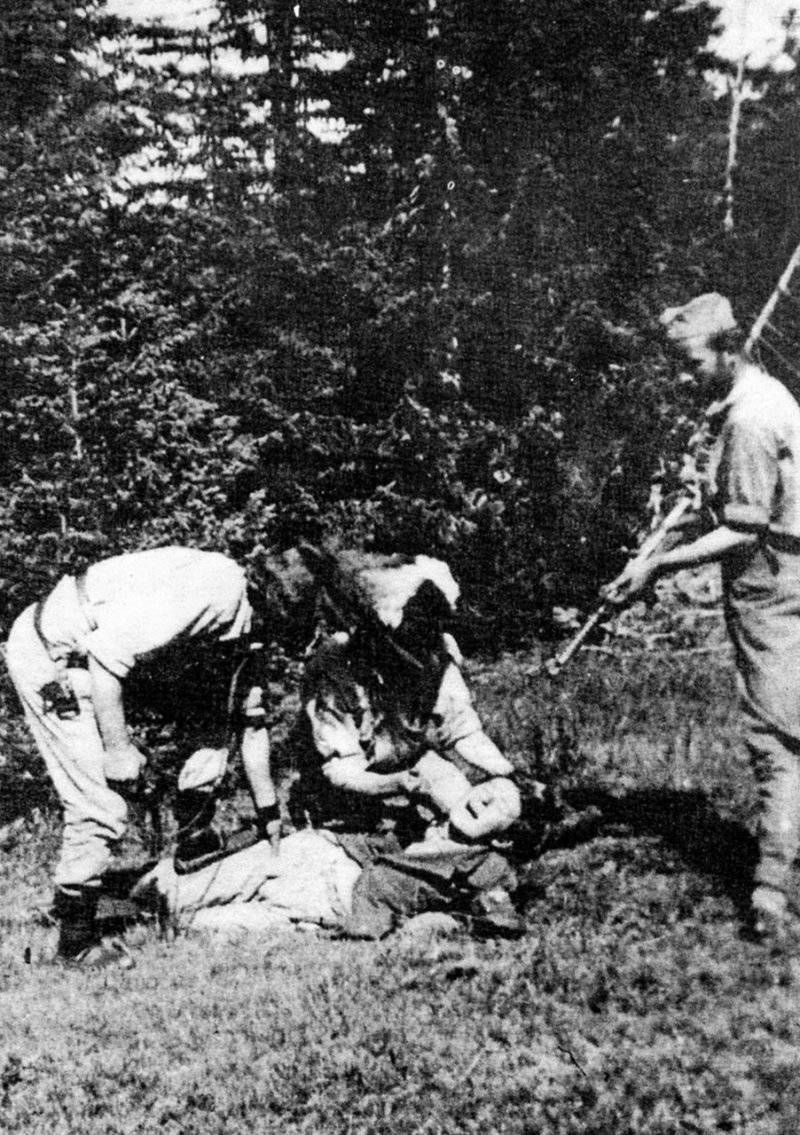
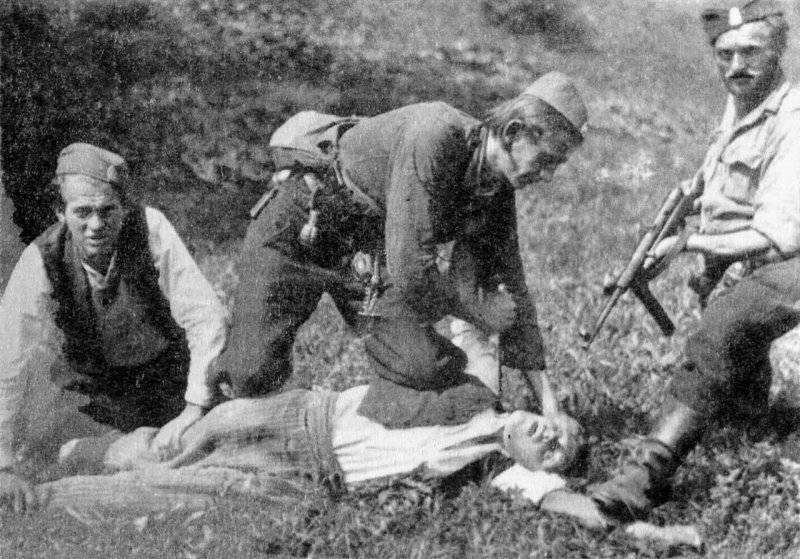
Information